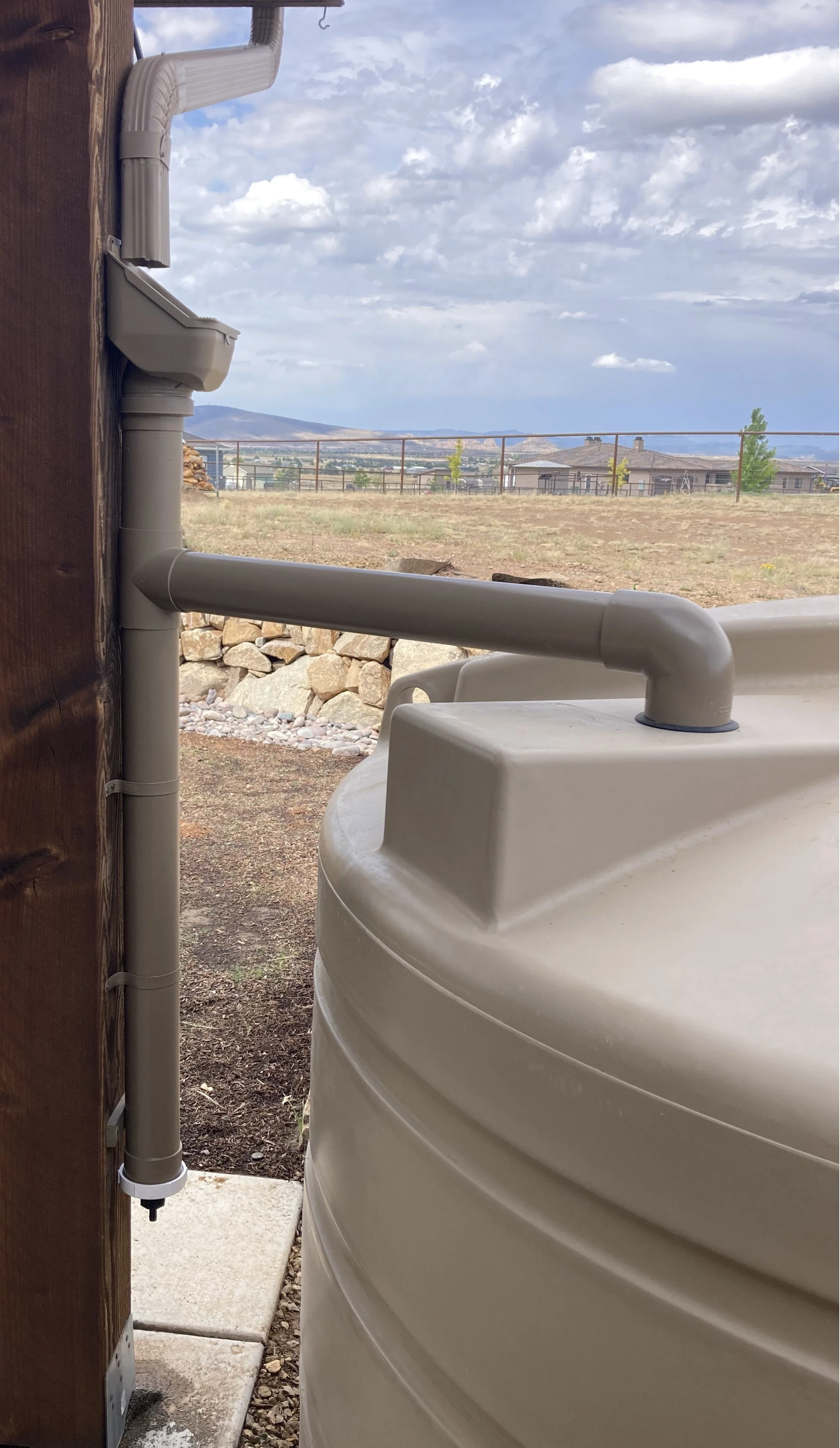Water Conservation Part II
Last week we learned a little about water conservation and I offered a few ideas of how we can all, or most of us, do our part to not only reduce water use, but also increase recharge of the groundwater. All of our municipal water comes from underground aquifers which are recharged by surface water in the form of rain and snow. A little recharge today might help future generations. (It takes a very long time for surface water to reach the aquifers which are hundreds of feet deep.) Past generations should have thought about helping us, but they didn’t, so here we are . . .
I listed several options for conserving water last time and I would like to add another of my favorites to that list today: rainwater catchment. This can take more than one form. Last week we looked at catching surface runoff and detaining it with small earthen structures to allow for percolation into the soil. Catchment of this type can be accomplished by merely building a barrier on a slope to catch surface runoff or the detention area can catch water directed from roof gutter downspouts. Both methods serve to delay the runoff long enough to allow the water to stay in one place for a few hours or even days.
Another option is to retain the water in some sort of vessel which does not allow the water to soak in or escape to evaporation. In the past, this was referred to as a cistern and was often the only source of water in areas where wells were impractical. Cisterns are still used in some parts of the world today. In our area, we usually refer to these as rain barrels or rainwater tanks. When installed correctly, these can serve as backup water in case of emergencies such as power loss during a storm or a problem with a well pump or a dry hole.
To be clear, this is not considered potable water no matter how clean the tank might be, especially if the water collected comes off an asphalt shingled roof. To be considered potable, or drinkable, the water from your collection system would need to go through a purification process and that can be expensive, but it is an option if you have no other source of water. Rainwater can be safely used to water landscape plants, houseplants, flush a toilet using a bucket, or even a spit bath in a pinch.
How much is enough, and does it matter? If you are just trying to save a little water and give your houseplants an elixir from heaven, then a rain barrel or two will suffice. These can be placed under the eaves of the house where the rain drips off the roof or put under a downspout from the gutters. It will fill quickly in one good storm and overflow without causing any noticeable difference in your runoff. If, however, you need water for emergencies and watering a small garden and/or a few fruit trees, consider upping the game a bit.
Below are a couple photos of a system installed in the area. The proper components of the system include a leaf deflector, a first flush system to keep the excess silt and dirt from the roof out of the tank, and an overflow system for when the tank gets full. The entire system protects the water in the tank from insects and critters. This is a low-profile 1125-gallon tank which is only 56 inches tall without the base. A powered pump system can be installed to better use the water if your property is relatively flat, or the tank can be elevated to the eaves of the house. Another option is to collect the water in a small tank at ground level and pump the water to another tank higher on the property to allow for gravity flow when you want to water your crops. There’s also the old-fashioned pitcher pump. Now, if it will rain . . .
Rainwater Tank
Leaf Deflector and First Flush Device
I hope to see you at the watering hole,
The HortiCoach

